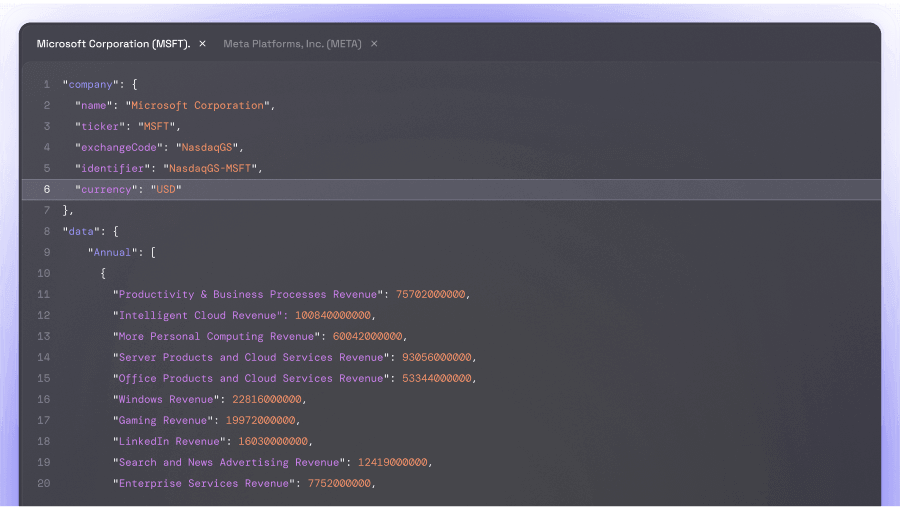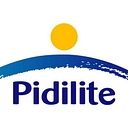| 10.06105 % | The Vanguard Group, Inc. | 41,119,510 | 346,475 | |
| 5.49676 % | BlackRock Institutional Trust Company, N.A. | 22,465,250 | -400,531 | |
| 4.59565 % | State Street Investment Management (US) | 18,782,407 | 187,415 | |
| 2.78662 % | Geode Capital Management, L.L.C. | 11,388,935 | 345,798 | |
| 2.04746 % | Invesco Capital Management (QQQ Trust) | 8,367,960 | 59,388 | |
| 1.93421 % | Capital Research Global Investors | 7,905,120 | 945,005 | |
| 1.74589 % | AllianceBernstein L.P. | 7,135,468 | -261,523 | |
| 1.64099 % | Wells Fargo Advisors | 6,706,736 | -379,340 | |
| 1.13206 % | BlackRock Asset Management Ireland Limited | 4,626,746 | -263,027 | |
| 1.13075 % | Wellington Management Company, LLP | 4,621,367 | -36,340 | |
| 1.06731 % | Fundsmith LLP | 4,362,099 | -151,800 | |
| 1.01417 % | BofA Global Research (US) | 4,144,916 | -18,788 | |
| 0.97780 % | Columbia Threadneedle Investments (US) | 3,996,260 | -254,569 | |
| 0.94825 % | Invesco Capital Management LLC | 3,875,487 | 519,830 | |
| 0.93119 % | State Farm Insurance Companies | 3,805,787 | 0 | |
| 0.92439 % | Morgan Stanley Investment Management Ltd. (UK) | 3,778,001 | -52,275 | |
| 0.81006 % | Northern Trust Investments, Inc. | 3,310,709 | -54,409 | |
| 0.77806 % | Walter Scott & Partners Ltd. | 3,179,923 | -206,036 | |
| 0.72193 % | Amundi Asset Management, SAS | 2,950,516 | 613,401 | |
| 0.68462 % | Legal & General Investment Management Ltd. | 2,798,054 | -96,019 | |
| 0.67151 % | BlackRock Investment Management (UK) Ltd. | 2,744,477 | 140,159 | |
| 0.64059 % | Parametric Portfolio Associates LLC | 2,618,100 | 36,713 | |
| 0.60615 % | Mitsubishi UFJ Asset Management Co., Ltd. | 2,477,321 | 101,889 | |
| 0.58795 % | Ninety One UK Limited | 2,402,951 | 228 | |
| 0.58462 % | Dimensional Fund Advisors, L.P. | 2,389,347 | -85,307 | |
| 0.58067 % | Charles Schwab Investment Management, Inc. | 2,373,201 | 24,600 | |
| 0.55286 % | Norges Bank Investment Management (NBIM) | 2,259,535 | 701,810 | |
| 0.55193 % | Barclays Bank PLC | 2,255,745 | 942,237 | |
| 0.53874 % | UBS Financial Services, Inc. | 2,201,825 | -245,458 | |
| 0.51509 % | Morgan Stanley Smith Barney LLC | 2,105,171 | -16,814 | |
| 0.50234 % | First Trust Advisors L.P. | 2,053,075 | 87,285 | |
| 0.48042 % | Mellon Investments Corporation | 1,963,493 | -49,399 | |
| 0.46602 % | Goldman Sachs Asset Management, L.P. | 1,904,629 | 31,307 | |
| 0.43948 % | Managed Account Advisors LLC | 1,796,153 | -81,436 | |
| 0.43670 % | Mackenzie Investments | 1,784,778 | 199,074 | |
| 0.41909 % | Nuveen LLC | 1,712,822 | -419,133 | |
| 0.40804 % | Stifel, Nicolaus & Company, Incorporated | 1,667,640 | -44,779 | |
| 0.38106 % | Envestnet Asset Management, Inc. | 1,557,392 | -13,577 | |
| 0.36872 % | Fundsmith Investment Services Ltd. | 1,506,966 | -44,253 | |
| 0.36839 % | UBS Asset Management (Switzerland) | 1,505,630 | 505,006 | |
| 0.36151 % | JP Morgan Asset Management | 1,477,509 | 835,409 | |
| 0.36073 % | Northern Trust Global Investments | 1,474,305 | -2,924 | |
| 0.34549 % | California Public Employees' Retirement System | 1,412,026 | -237,796 | |
| 0.32718 % | Fayez Sarofim & Co. | 1,337,193 | -16,374 | |
| 0.32401 % | Fidelity Management & Research Company LLC | 1,324,244 | -156,939 | |
| 0.30771 % | BlackRock (Netherlands) B.V. | 1,257,626 | -71,354 | |
| 0.30287 % | Morgan Stanley & Co. LLC | 1,237,818 | -564,786 | |
| 0.30279 % | Janus Henderson Investors | 1,237,518 | -113,901 | |
| 0.30211 % | DWS Investment GmbH | 1,234,725 | 11,487 | |
| 0.30135 % | Schweizerische Nationalbank | 1,231,600 | 82,500 | |
| 0.28989 % | Nordea Funds Oy | 1,184,798 | -288,037 | |
| 0.28819 % | BLS Capital Fondmæglerselskab A/S | 1,177,845 | -25,350 | |
| 0.28803 % | UBS Asset Management (UK) Ltd. | 1,177,181 | -110,222 | |
| 0.28579 % | ProShare Advisors LLC | 1,168,043 | -1,978 | |
| 0.26725 % | BlackRock Financial Management, Inc. | 1,092,254 | 2,464 | |
| 0.25264 % | Sumitomo Mitsui Trust Bank, Limited | 1,032,547 | 6,821 | |
| 0.25127 % | PNC Investments LLC | 1,026,946 | 9,567 | |
| 0.24088 % | Allianz Global Investors GmbH | 984,473 | 24,504 | |
| 0.23875 % | RBC Global Asset Management Inc. | 975,790 | 117,409 | |
| 0.23458 % | Aviva Investors Global Services Limited | 958,731 | -38,580 | |
| 0.23290 % | DWS Investments UK Limited | 951,866 | 60,745 | |
| 0.23206 % | Capital World Investors | 948,415 | 0 | |
| 0.23172 % | Goldman Sachs & Company, Inc. | 947,032 | -114,704 | |
| 0.23019 % | Jensen Investment Management Inc. | 940,786 | -342,778 | |
| 0.22968 % | Bahl & Gaynor, Inc. | 938,690 | -18,341 | |
| 0.22092 % | HSBC Global Asset Management (UK) Limited | 902,896 | 53,080 | |
| 0.22089 % | CIBC Private Wealth Management | 902,762 | -5,094 | |
| 0.21492 % | UBS Asset Management (Americas) LLC | 878,371 | -61,524 | |
| 0.21429 % | Citi Investment Research (US) | 875,817 | -14,070 | |
| 0.21150 % | T. Rowe Price Associates, Inc. | 864,412 | 130,629 | |
| 0.20993 % | Raymond James & Associates, Inc. | 857,991 | -13,867 | |
| 0.20717 % | National Pension Service | 846,719 | -161,694 | |
| 0.20634 % | Rhumbline Advisers Ltd. Partnership | 843,296 | -17,399 | |
| 0.20593 % | American Century Investment Management, Inc. | 841,631 | 397,385 | |
| 0.19891 % | Aperio Group, LLC | 812,947 | 1,994 | |
| 0.19874 % | BNY Mellon Asset Management | 812,238 | -131,377 | |
| 0.19787 % | Bank Julius Bär & Co. AG | 808,680 | -1,171 | |
| 0.18611 % | Northern Trust Global Investments Limited | 760,612 | -39,375 | |
| 0.18559 % | Brown Brothers Harriman & Company | 758,495 | 53,807 | |
| 0.18507 % | GuardCap Asset Management Limited | 756,371 | -11,969 | |
| 0.17869 % | ClearBridge Investments, LLC | 730,288 | -59,374 | |
| 0.17710 % | Navera Investment Management Limited | 723,792 | -4,330 | |
| 0.17511 % | BNP Paribas Securities Corp. North America | 715,655 | -269,971 | |
| 0.17488 % | JPMorgan Private Bank (United States) | 714,730 | 56,041 | |
| 0.17465 % | TD Asset Management Inc. | 713,787 | -53,395 | |
| 0.17455 % | BlackRock Japan Co., Ltd. | 713,378 | 1,708 | |
| 0.17319 % | Robeco Institutional Asset Management B.V. | 707,819 | 58,308 | |
| 0.17118 % | Victory Capital Management Inc. | 699,599 | 67,300 | |
| 0.16644 % | Capital Counsel LLC | 680,231 | -2,981 | |
| 0.15798 % | UBS Fund Management (Switzerland) AG | 645,650 | 27,473 | |
| 0.15795 % | California State Teachers Retirement System | 645,551 | -27,248 | |
| 0.15750 % | BlackRock Investment Management, LLC | 643,692 | 145,967 | |
| 0.15560 % | Assenagon Asset Management S.A. | 635,943 | 424,297 | |
| 0.15429 % | Loring, Wolcott & Coolidge Fiduciary Advisors, LLP | 630,586 | -7,386 | |
| 0.15184 % | LPL Financial LLC | 620,566 | -24,648 | |
| 0.14892 % | Jacobs Levy Equity Management, Inc. | 608,654 | -343 | |
| 0.14543 % | T. Rowe Price International Ltd | 594,391 | 2,803 | |
| 0.14274 % | BlackRock Asset Management Canada Limited | 583,376 | -18,129 | |
| 0.14213 % | Cincinnati Financial Corporation | 580,900 | 0 | |
| 0.13958 % | Williams Jones Wealth Management LLC | 570,482 | -2,183 | |













